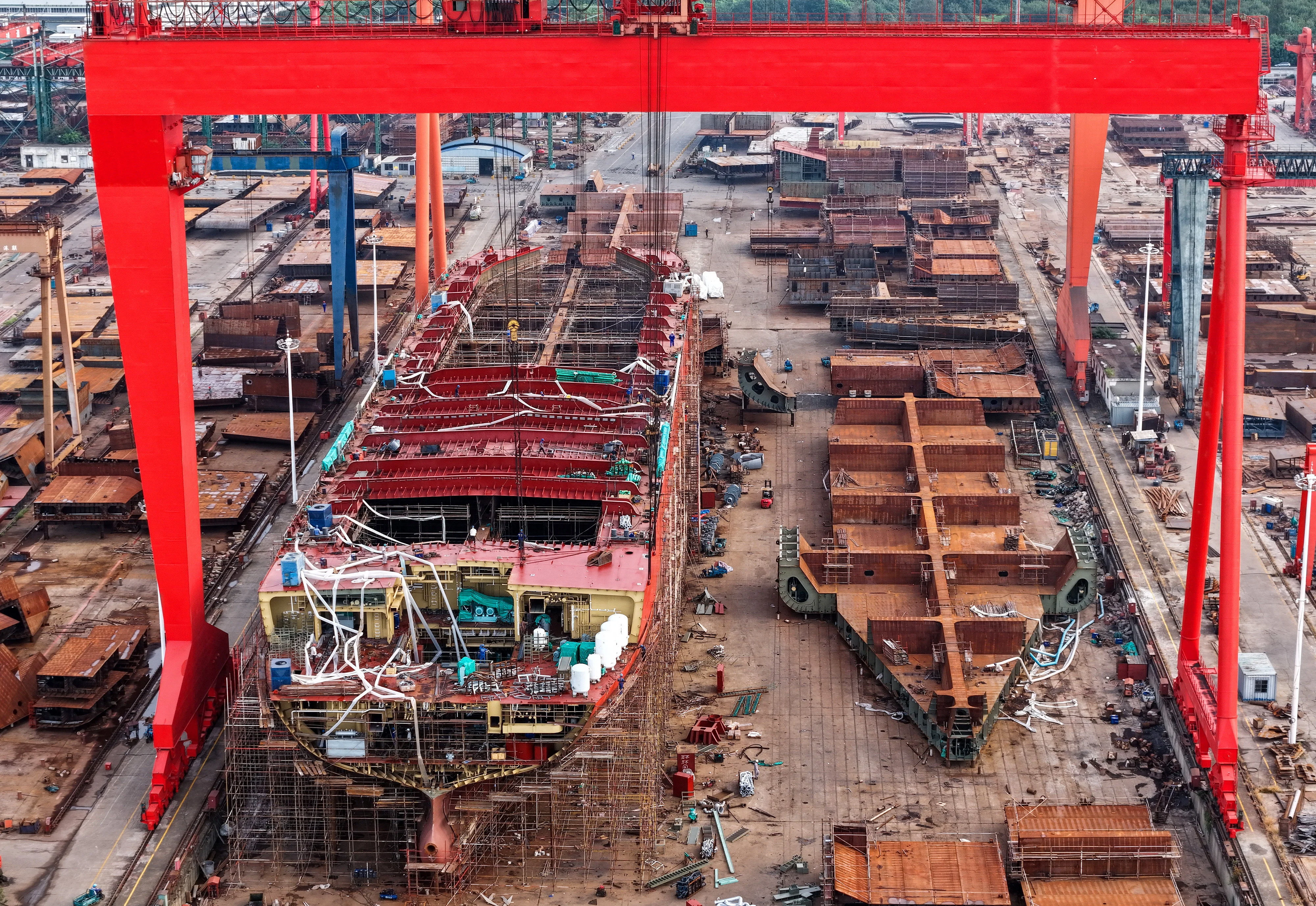By Winston Mok
Copyright scmp

US hopes of getting China to place big orders of Boeing jets have risen anew after reports of progress, including a framework agreement on TikTok, at the fourth round of trade negotiations in the Spanish capital of Madrid.
Praising the progress, US President Donald Trump said he would meet Chinese President Xi Jinping at the Asia-Pacific Economic Cooperation (Apec) summit in Seoul, which starts at the end of next month, and plans to visit China early next year.
But why would China wish to buy US planes when Trump’s administration continues to discriminate against Chinese-built ships? Next month, steep new US port fees on Chinese-linked ships, announced in April, are set to come into effect.
The United States is understandably concerned about China’s shipbuilding capacity, which is estimated to be 200 times as big as that of the US. China dominates commercial shipbuilding globally, accounting for 57 per cent of new deliveries last year in terms of tonnage.
But the shift in shipbuilding dominance to Asia is not new and has been happening since the 1950s – first to Japan, then to South Korea before China. Today, the three East Asian industrial giants account for over 90 per cent of global shipbuilding capacity.
Trump’s administration appears to have pinned the hopes of America’s shipbuilding revival on Japan and South Korea, which have separately agreed to invest in shipbuilding in the US.
As much as the projection of naval power, shipbuilding strength often tracked the rise and decline of great powers. Great Britain dominated shipbuilding globally for a century until the mid-20th century. Aside from it, imperial Japan and the US had two of the world’s largest navies at the start of the second world war.
But the US soon pulled ahead with rapid industrial mobilisation, vastly outproducing Japan in naval vessels and prevailing through its deep reservoir of economic capacity. Today, a deindustrialised US faces very different odds against China.
Post-war Japan turned to commercial shipbuilding, and through appropriating American techniques of standardisation and state-enterprise coordination, saw a meteoric rise in the industry – surpassing Britain’s by the mid-1950s.
Two decades later, South Korea jump-started its shipbuilding industry, also with the help of industrial policy and imported know-how, as well as a burgeoning steel industry, overtaking Japan in 2000 as the world’s largest shipbuilder.
At the turn of the century, China made a big push in shipbuilding, boosting state investment, international partnerships and technology transfers. Chinese shipyards now receive the lion’s share of new orders, cementing China’s position as the undisputed leader in ship production.
Unlike light industries which may be readily dispersed to Southeast Asia and South Asia, shipbuilding is a capital-intensive industry which does not move easily.
Moreover, the industry is anchored on the intertwined chain from steel supply upstream to ship demand downstream. The shift of shipbuilding industry leadership, from Japan to South Korea and then China, closely followed the cascading of their steel industries: China has grown to dominate global steel production, with Japan and South Korea ranked 3rd and 6th, according to the World Steel Association.
All three East Asian economies are export powerhouses with demand for container ships. Seven of the world’s top 10 busiest container ports are in China and Chinese shipyards represent 14 of the world’s largest by order books. But Japan and South Korea ship makers still dominate the complex, high-end segments, such as in liquefied natural gas (LNG) carriers, ultra-large container vessels and very large crude carriers (VLCCs). And South Korea still operates the world’s largest shipyard, HD Hyundai Heavy Industries.
South Korea, as a leader in shipbuilding technologies, has promised in particular large investments to modernise America’s shipbuilding industry. But how realistic is the endeavour, seen as a tactic to woo Trump?
Besides its ageing naval shipyards, the US has a small group of specialised yards making smaller ships from barges to ferries. These tend to be coastal and inland workboats, rather than ocean-going vessels. Scaling up would require significant capital investments and skill upgrades. The required supply chain upgrades would also take many years. The question is whether the US is capable of the state-led industrial coordination that allowed Japan and South Korea to quickly establish their shipbuilding dominance.
Meanwhile, US anti-immigration raids continue to disrupt business. The recent detention of more than 300 South Korean workers at a Hyundai-LG battery plant being built in Georgia, and their subsequent repatriation, highlighted the challenges of foreign investment.
The stark inefficiencies plaguing American shipbuilding make a compelling case for foreign collaboration. South Korean shipbuilders can make a US destroyer at half the cost and two-thirds of the time needed by their US counterparts. But US ship makers are protected from foreign competition by the Jones Act, which mandates US production for ships used in intra-US transport. All US naval ships must also be built domestically.
The trajectory of America’s shipbuilding industry offers a sobering lesson in the unintended consequences of protectionism. Decades of shielding domestic shipyards from foreign competition through the Jones Act and military procurement restrictions have created an insular industry that is not competitive.
As it stands, pending legislative changes, America’s best hope for swiftly attaining cost-effective naval procurement lies in importing ships from South Korean yards.
As Washington grapples with how to counter China’s shipbuilding supremacy, its industrial decline serves as a reminder that true security comes not from erecting walls, but from maintaining competitive excellence in an interconnected global economy.



